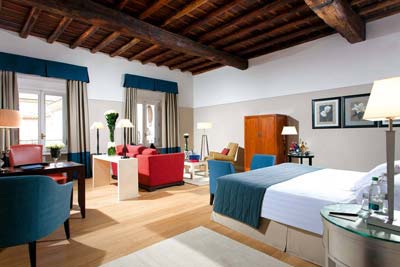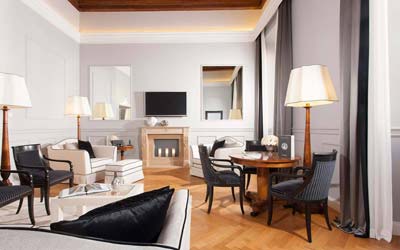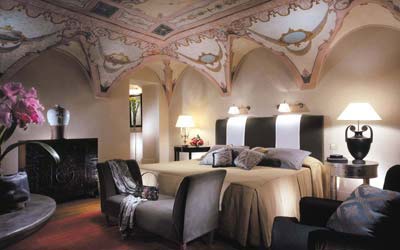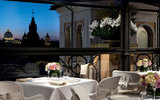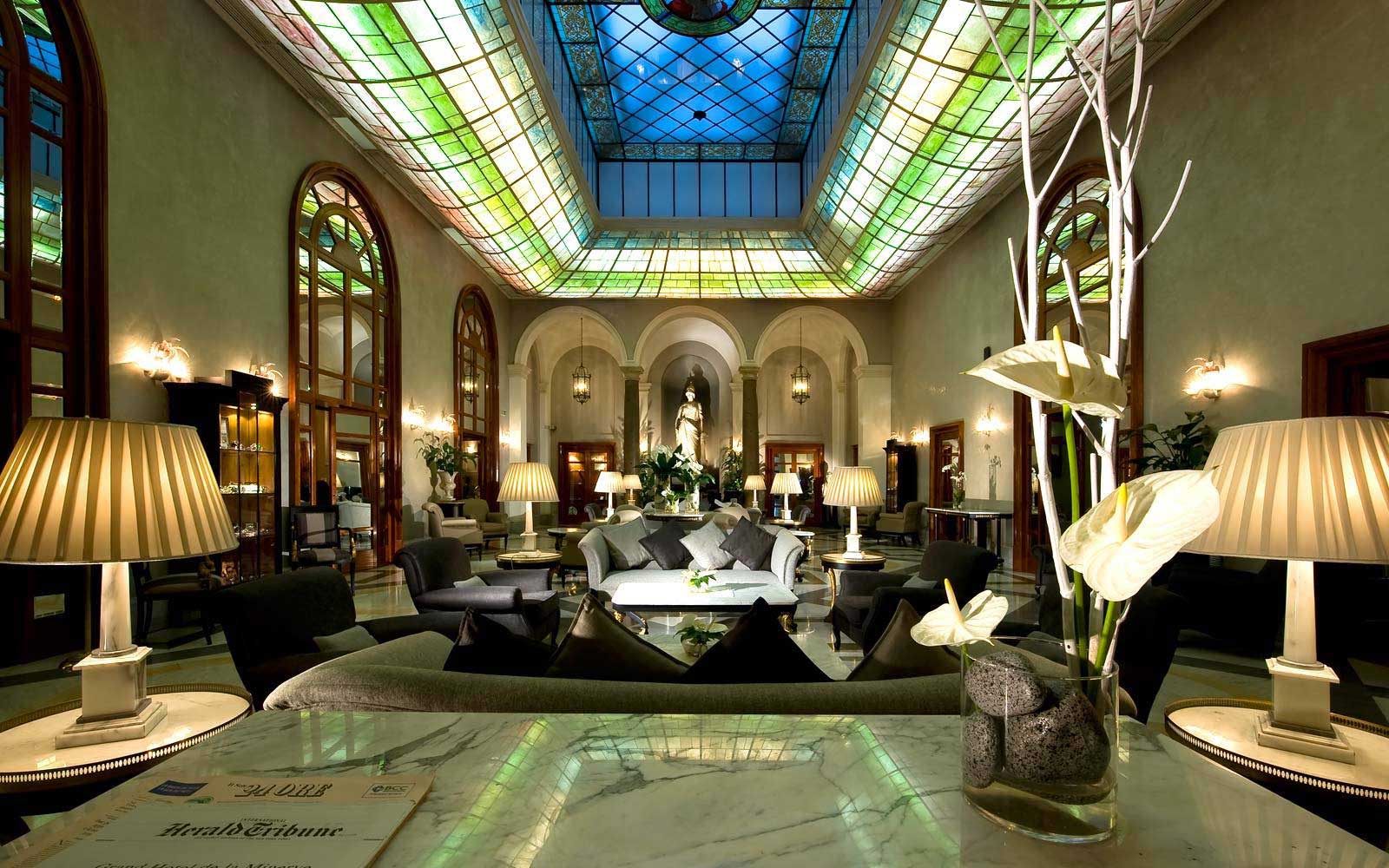
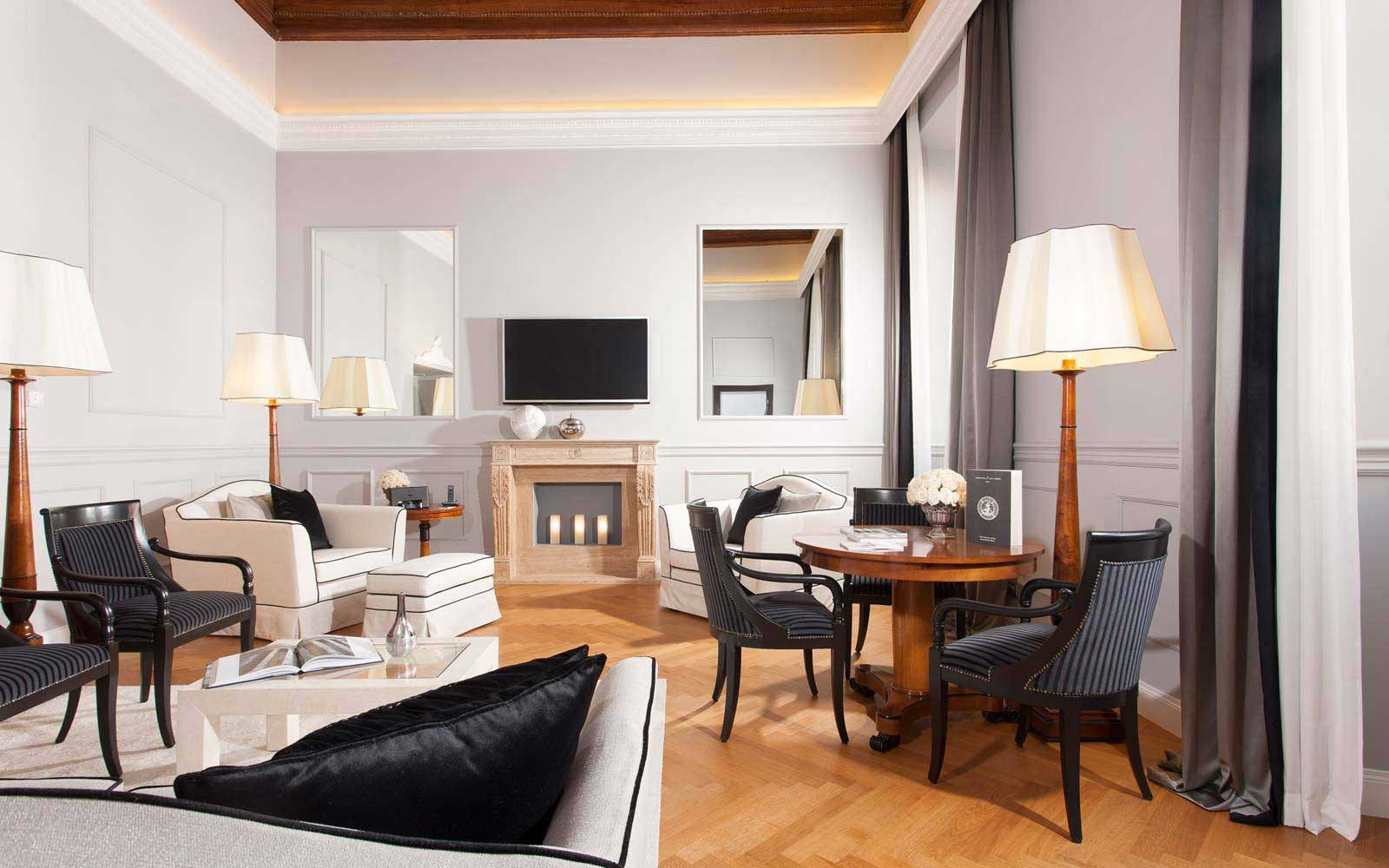
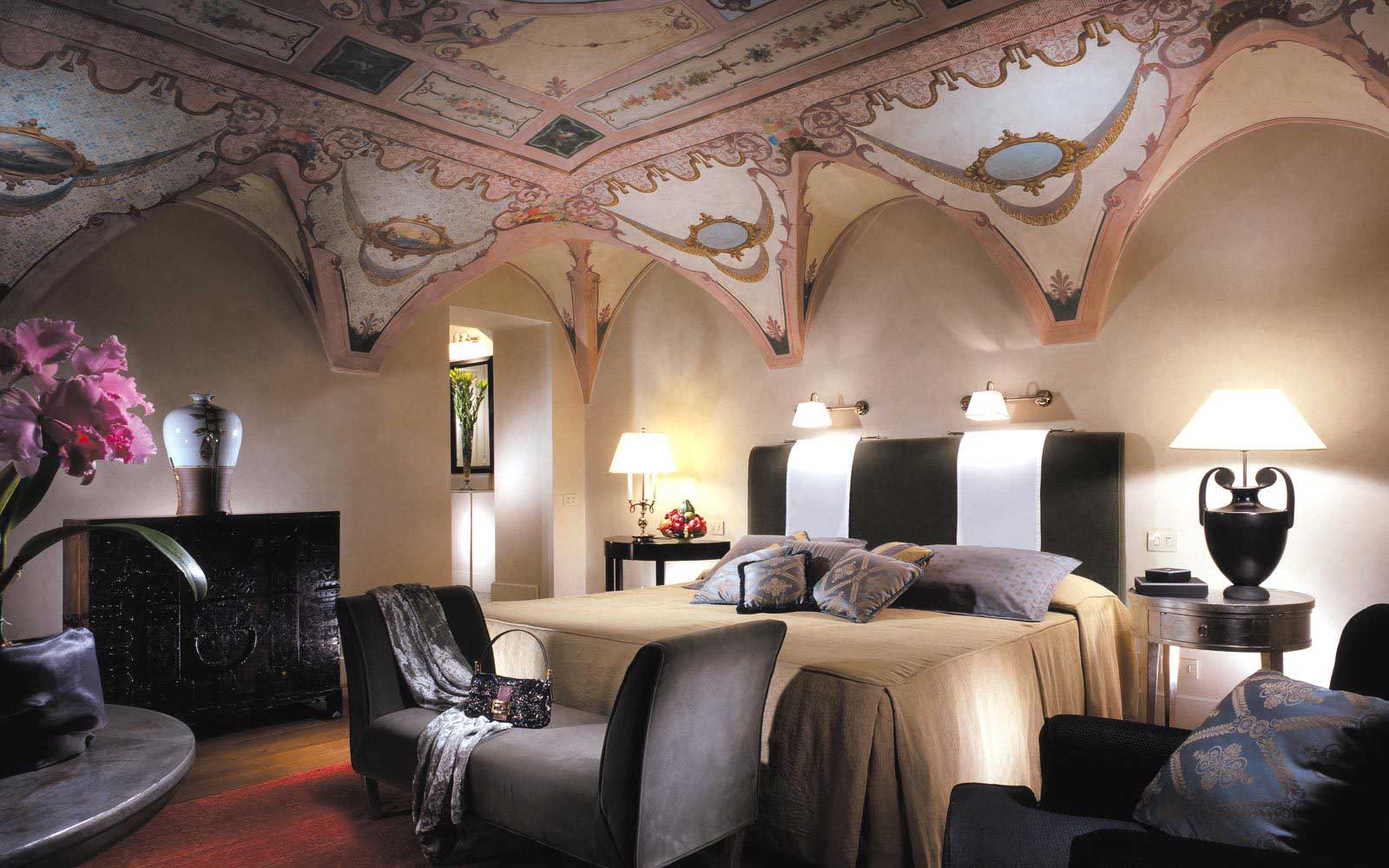
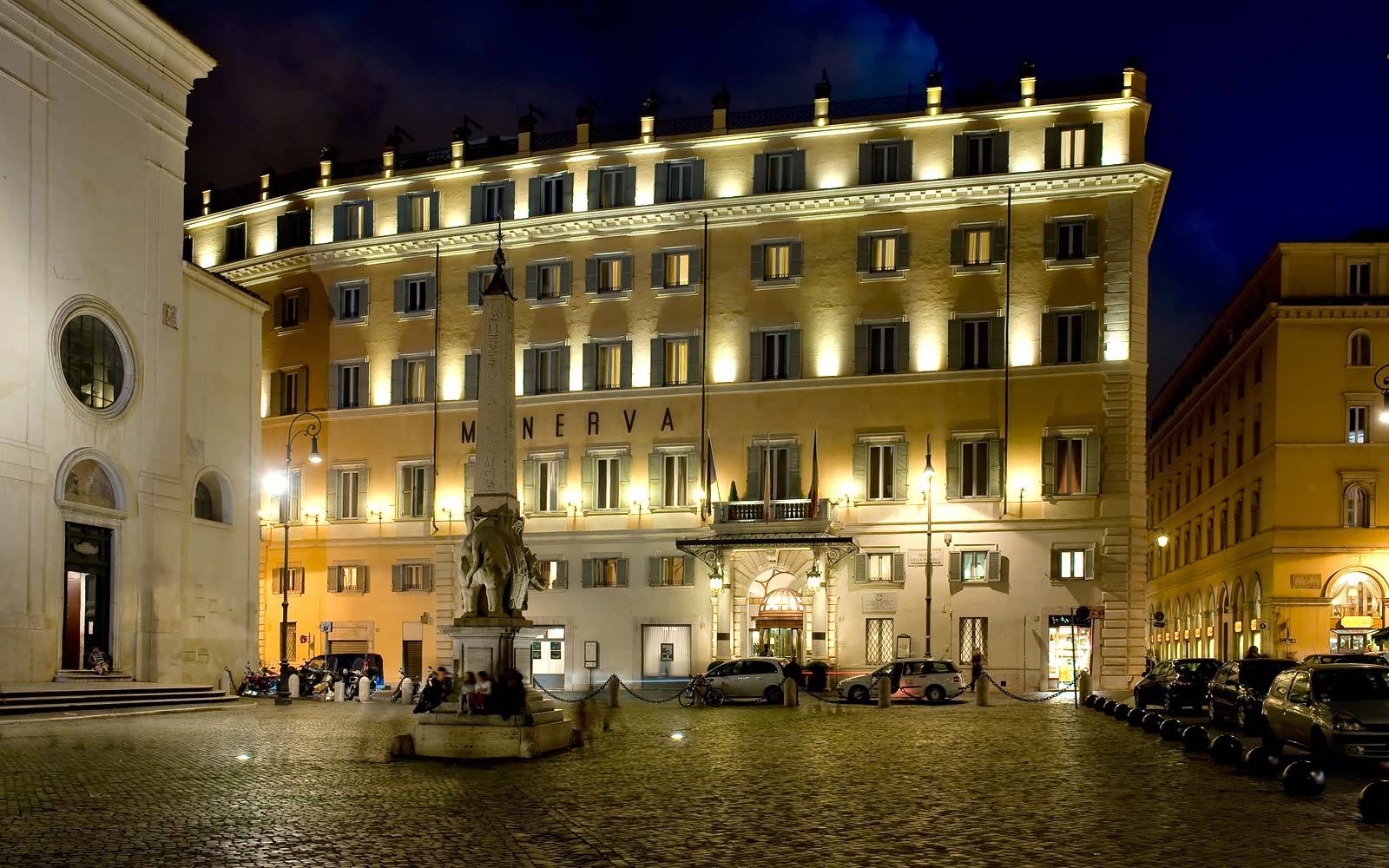
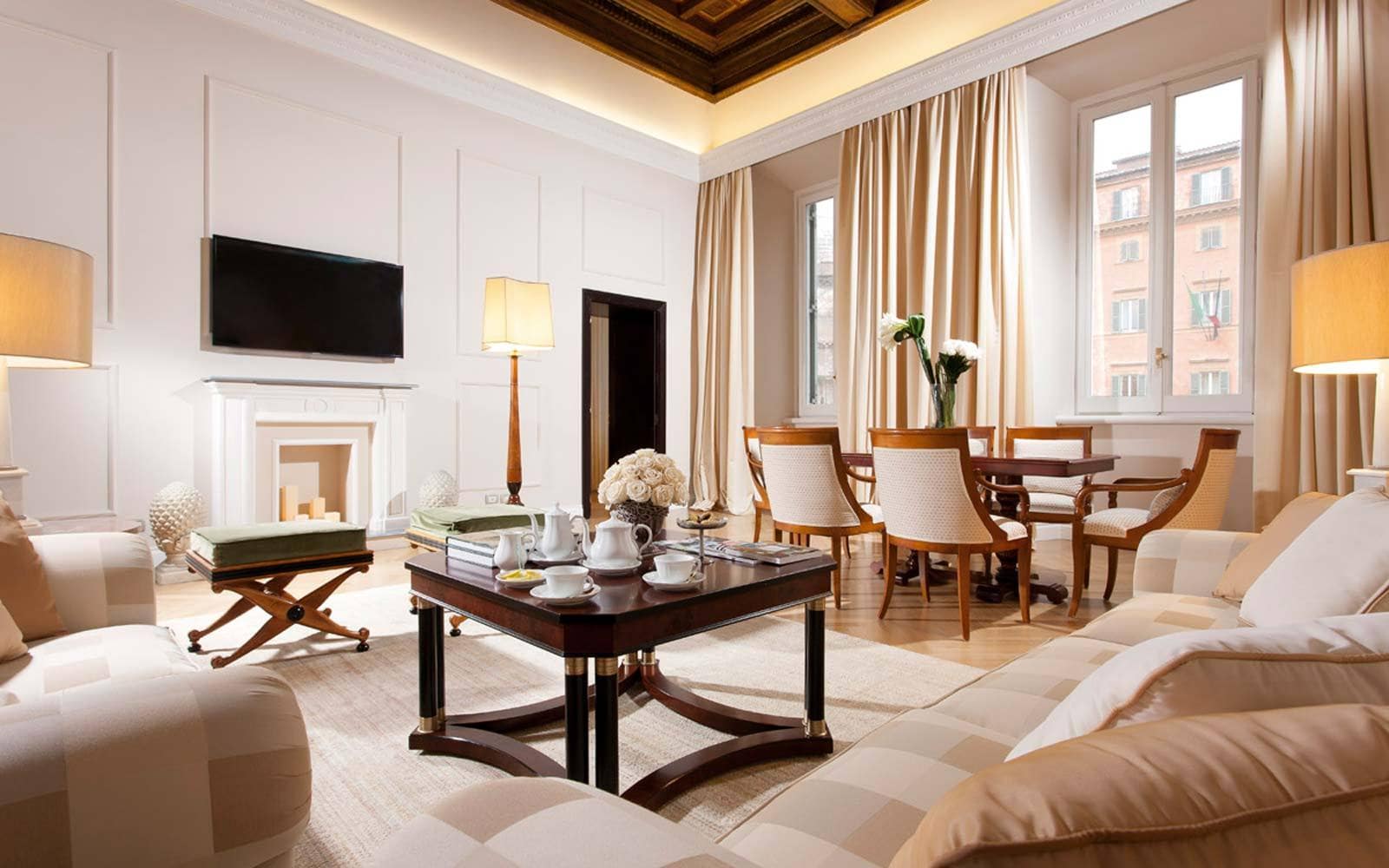

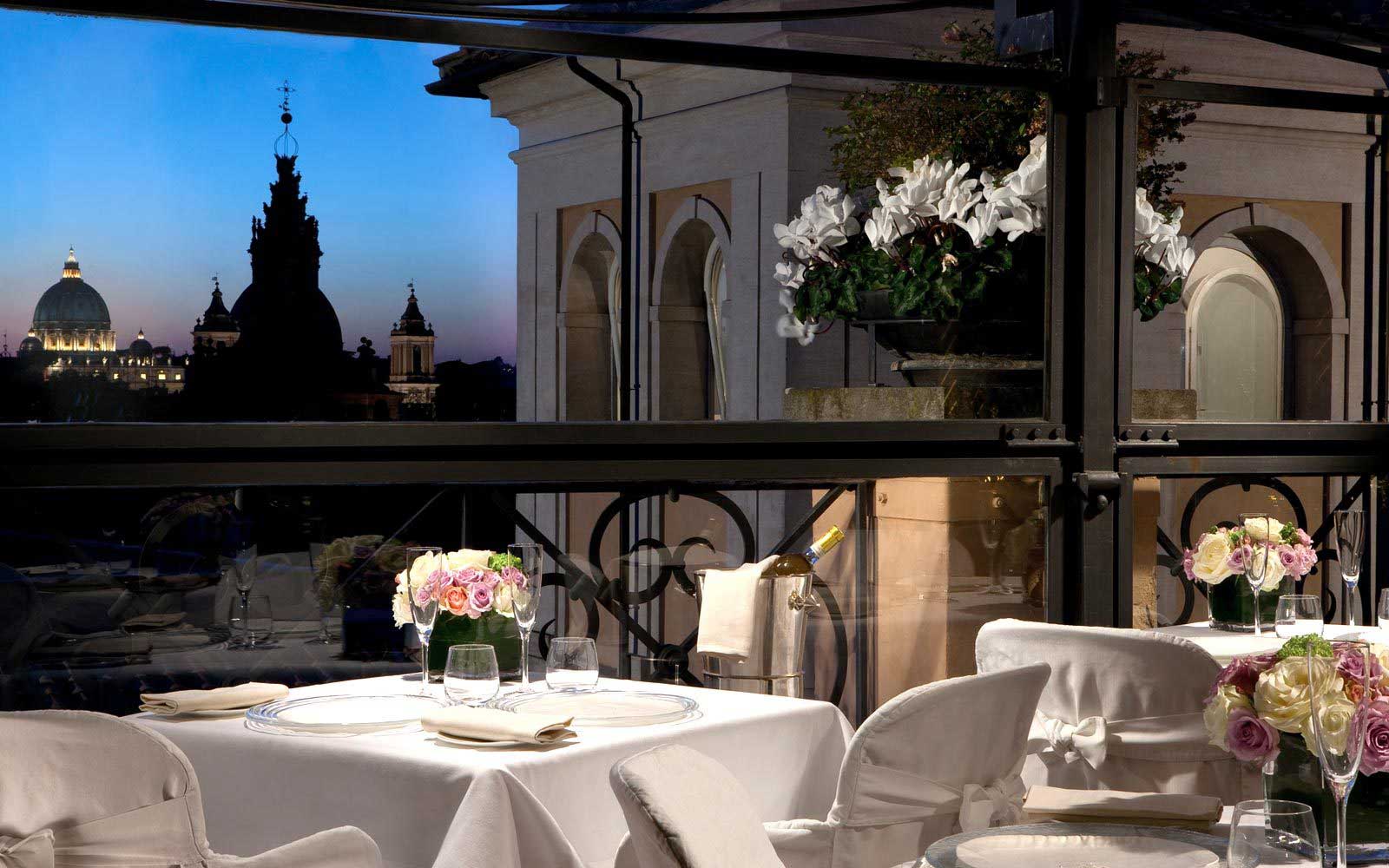
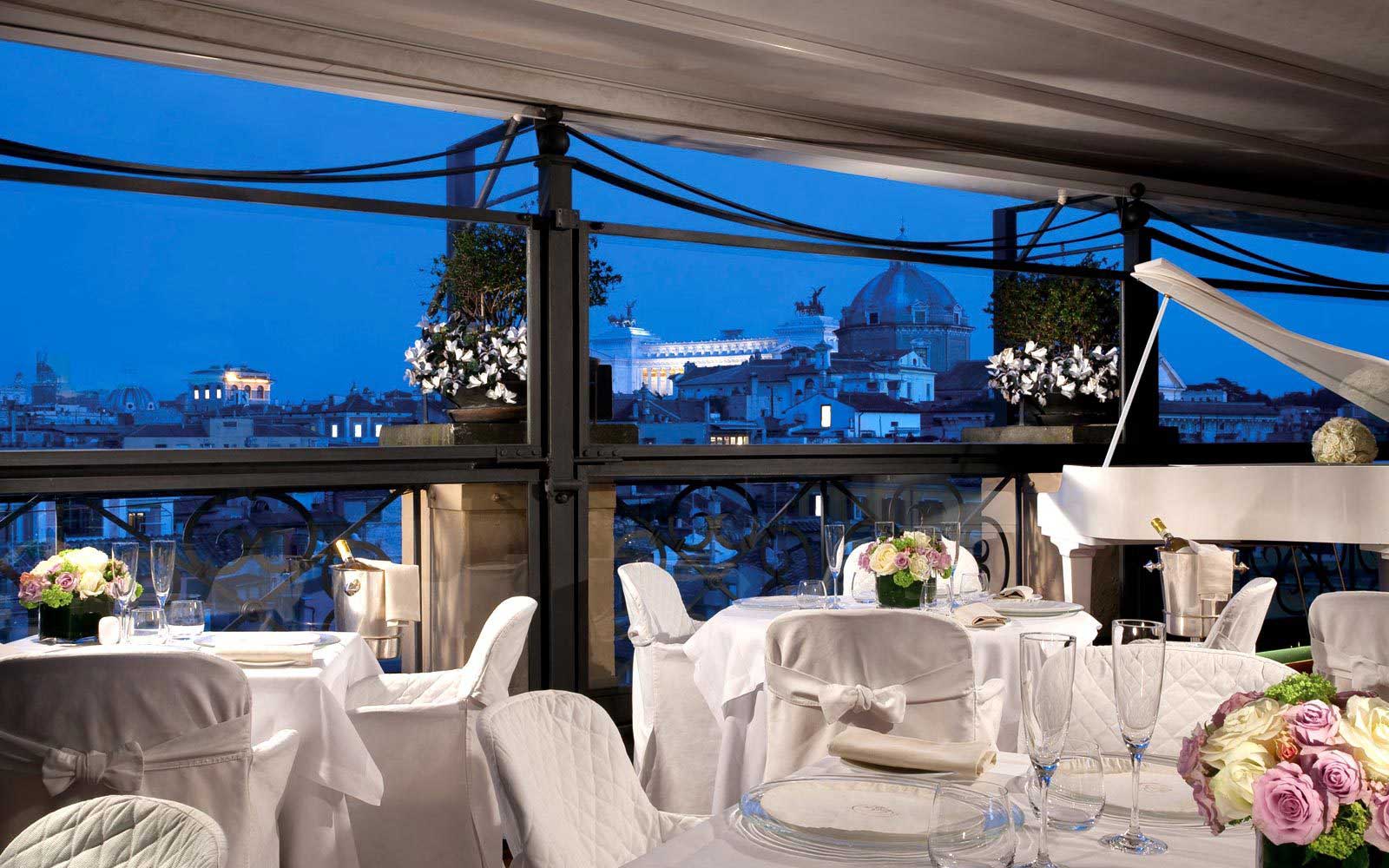
Catch this super deal! Buy now and save 20% on the best available daily rate
Catch this special week-end rate!
Book now and save 20% on the best available daily rate
Book 4 nights and save 15% on the best available daily rate
Book 4 nights and save 10% on the best available daily rate
History

The world’s most beautiful terrace is to be found in Rome, at the Grand Hotel de la Minerve. This is no exaggeration: it is in fact the only terrace to overlook the dome of the Pantheon in all its detail, from both a significant height and an impressive vicinity. But that’s not all! Of the city’s many monuments, the dome of St. Ivo’s church built by Borromini in 1642 and the roof terrace of the Quirinale are clearly outlined against the Roman sky. If instead one looks down into the square one sees one of the great Bernini’s most curious works: a miniature elephant bearing an obelisk.
The grand complex of the Grand Hotel de la Minerve was built in 1620 for the aristocratic Fonseca family, an important Roman family of Portuguese origin. Since the end of the 1700’s the building has been used as a hotel.
The Hotel in the Heart of Rome
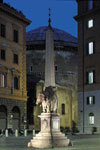
During the course of the 1800’s, the Grand hotel de la Minerve was known for its privileged position in the heart of the city, close to the Pantheon and the Parliament buildings. Numerous artists, rich aristocrats, important ecclesiastics and intellectuals selected the hotel as their place of residence of choice.
In 1891 a Winter Garden, now the elegant hall, was built in the inner courtyard of the hotel. Dominated by a statue of Minerva rising importantly from the central niche, the Hall is framed by ancient Roman columns and its crystal ceiling allows guests to enjoy every last ray of the sun’s light. The age-old tradition of afternoon tea accompanied by the music of the piano continues to be observed here today.
Illustrious Guests

During the revolution of 1798, the Grand Hotel de la Minerve was the refuge of Princess Massimo, widow of Duke Federico Cesi.
The Minerva was also one of the protagonists of the book “Diari Romani” by Ferdinand Gregorovius, who lived in Rome from 1852 to 1874, during the period of the Grand Tour. The well-known German scholar, originally from Eastern Prussia, lived in Rome while writing the history of the city during Medieval times and during the breaks in his research he often frequented the Minerva and its illustrious guests.
Amongst these were the last Empress of Mexico, Carlotta of Baviera - wife of Maximillion Hapsburg - who in October of 1866 took up residence at the Minerva along with her retinue of followers.
Other notable visits to the Minerva include the stays of Stendhal and George Sand and others such as that of Pope Pius IX who came to meet with Cardinal Aguirre, bishop of Guayaquir.
Today the Grand Hotel de la Minerve continues to be considered a meeting place for intellectual appointments.
The Prestigious Collection of Statues

Its collection of statues is another feature that makes the Grand Hotel de la Minerve unique. The Minerva situated in the Hall has already been mentioned – the others are located in the Salone Olimpo on the ground floor. These works are by the sculptor Rinaldo Rinaldi and date from the second half of the 19th century. The artist was a student of Canova and was much admired by Queen Margherita of Savoy.

This website uses cookies to improve navigation . Using the site is considered accepted the Cookie Policy.More Information - PrivacyAccept
Tel.: 39 06 695201 - Fax: 39 06 6794165
Email: reservations[at]ghminerve.com






